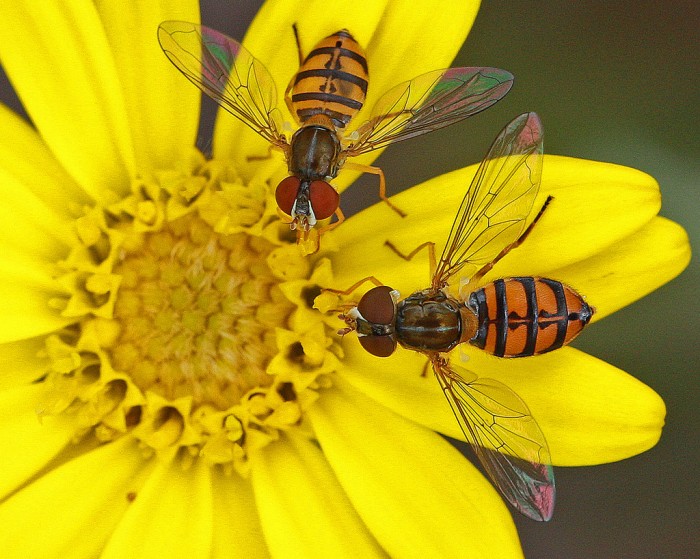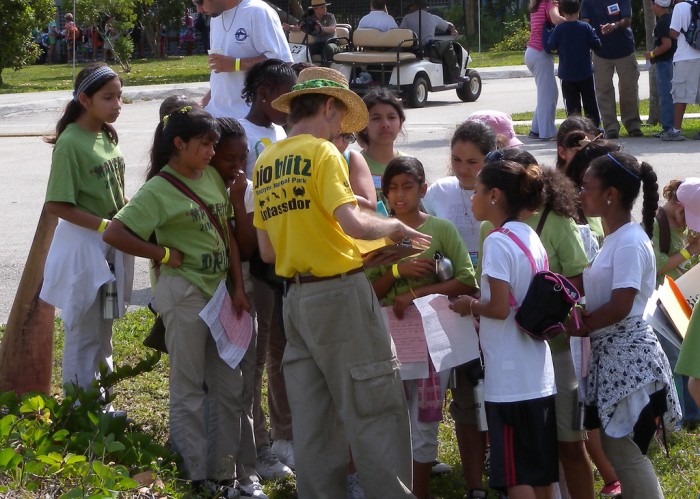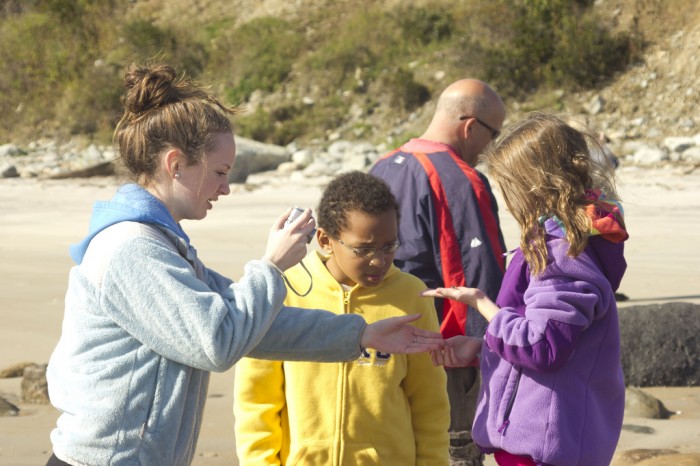Puttin’ on the Blitz—the BioBlitz

Flower Flies (Toxomerus marginatus) on Narrowleaf Silkgrass (Pityopsis graminifolia) Tosohatchee Wildlife Management Area, Orange County, FL. (Photo by Mary Keim)
How can kids, amateur scientists and nature enthusiasts learn more about the natural world while actually contributing to the body of scientific knowledge? By participating in BioBlitz, a kind of scavenger hunt for life forms. Groups of scientists, naturalists and volunteers conduct an intensive biological survey of a designated area over the course of 24 hours in an effort to record every species found there. BioBlitzes around the world help populate the database of 1.9 million known species on the planet, each with its own dedicated webpage—a project known as the Encyclopedia of Life (EOL).
Founded in 2007 by the Smithsonian and four other cornerstone organizations and based at the National Museum of Natural History, EOL was inspired by influential entomologist E.O. Wilson, who wrote a 2003 article titled “Encyclopedia of Life.” In it, he envisioned “an electronic page for each species of organism on Earth…a summary of everything known.” His subsequent March 2007 TED talk provided the catalyst the project needed, and in May 2007 funding got the ambitious project off the ground. EOL has grown from an initial 30,000 species entries to almost 1.3 million pages today. EOL brings together contributions from great scientific institutions as well as individual scientists and citizen scientists, including those who catalogue species discovered during BioBlitzes.
The first BioBlitz was held in Washington, D.C., in 1996 near the Anacostia River at Kenilworth Aquatic Gardens, with scientists from the Smithsonian and local universities taking part. In 1998, E.O. Wilson and Massachusetts wildlife expert Peter Alden began independently cataloging the organisms around Walden Pond, organizing their own BioBlitz. From these humble origins, BioBlitzes have grown to span the globe, with events from Indiana to Ireland searching for every kind of life, including one devoted to arachnids!
The citizen scientists who participate in BioBlitzes make the jobs of Smithsonian biologists, entomologists, and botanists easier by contributing vital information about the biodiversity of species, the way those species are distributed within a particular area, and how plentiful those species are in that region. In turn, EOL provides resources to create field guides for BioBlitzers, places to contribute species images and photos of the experience, podcasts bringing a variety of species to life, and other tools for parents and teachers to help students get the most out the world’s greatest repository of species information. To really appreciate the variety and abundance of life, go for a hike and take a close look up, down and all around.You might be surprised at what you see, and you might want to organize your own BioBlitz and share your experience with the world’s scientific community.
To find out where a BioBlitz is happening near you, check out the BioBlitz map at http://education.eol.org/bioblitz/worldwide.
Posted: 10 April 2013
-
Categories:
Collaboration , Education, Access & Outreach , Feature Stories , Natural History Museum , Science and Nature










